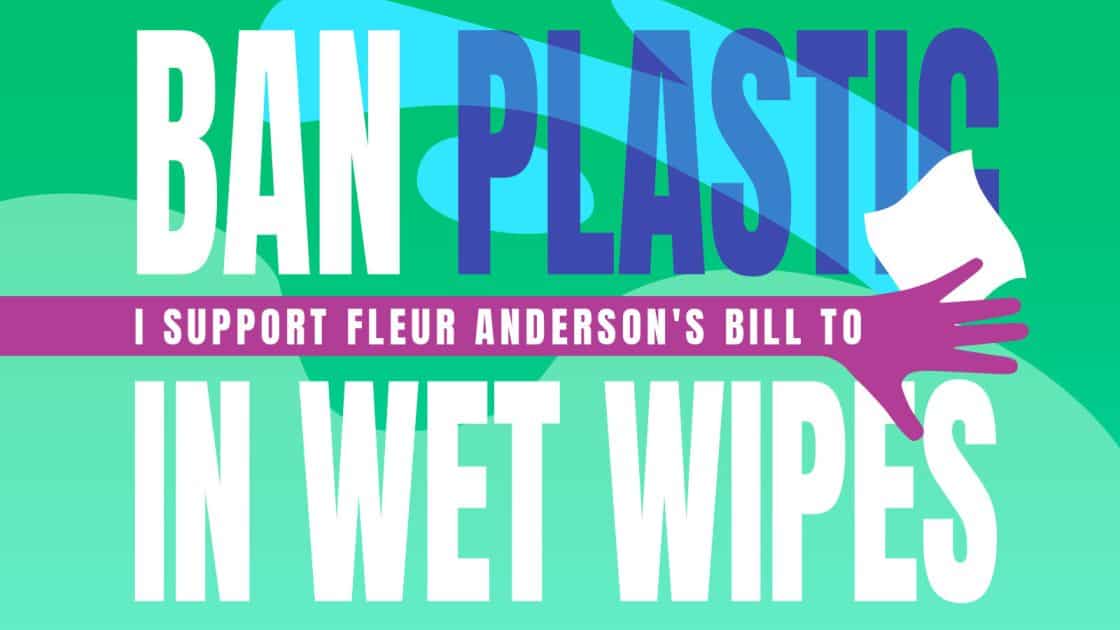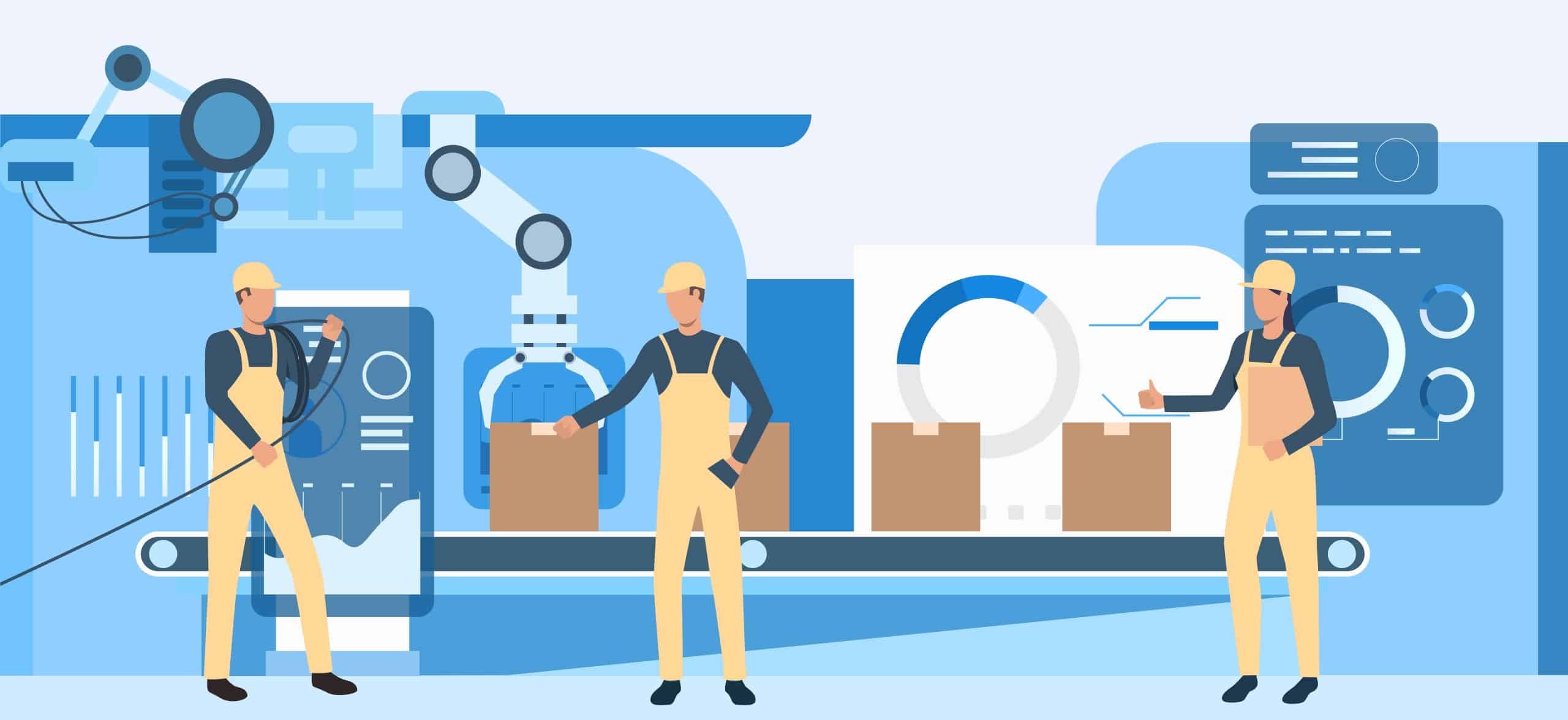1. Sustainable Materials: The Foundation of Eco-Friendly Wet Wipes
The process of mitigating the environmental consequences of wet wipes commences with the selection of the constituent components. Historically, wet wipes have been manufactured using synthetic fibers obtained from petroleum, which not only require a large amount of resources to produce but also take a long time to break down, resulting in substantial environmental damage. In contrast, sustainable materials provide a more environmentally friendly option, effectively decreasing the environmental impact of these common products.
Biodegradable fibers are a highly promising innovation in the creation of wet wipes. Natural fibers, such as bamboo, organic cotton, and eucalyptus, undergo decomposition faster than synthetic fibers. For example, bamboo is a very sustainable resource due to its rapid growth rate and low water and pesticide requirements. Organic cotton cultivation involves the exclusion of toxic chemicals, which helps to maintain the health of the soil and minimize pollution. Eucalyptus fibers, obtained from well-maintained forests, offer a resilient yet environmentally degradable alternative. By utilizing these materials, wet wipes are able to biodegrade and avoid long-term presence in the environment, hence minimizing their effects on landfills and marine ecosystems.
Plant-based alternatives are being investigated as a sustainable substitute for conventional wet wipe components, alongside biodegradable fibers. The components are derived from sustainable plant resources, cultivated and harvested using eco-friendly methods. Plant-based components, such as cornstarch, soy, and natural cellulose, can effectively substitute petrochemical-derived compounds. By utilizing renewable resources, the manufacturing of wet wipes becomes less dependent on finite fossil fuels, so mitigating greenhouse gas emissions and fostering a more sustainable life cycle for the product.
Closed-loop production techniques are a crucial element of sustainable materials. The objective of this strategy is to establish a circular economy in which resources are consistently recycled and reused, hence reducing waste and limiting resource consumption. Regarding wet wipes, this entails creating manufacturing systems that are capable of recovering and reusing waste fibers and other materials produced during the production process. Through the act of completing the loop, manufacturers can diminish the necessity for new materials, lessen production expenses, and mitigate the overall ecological footprint of their products.
Wet wipes manufacturers are actively pursuing certifications from reputable environmental standards groups to guarantee the sustainability of the materials used in wet wipes. Certifications such as the Global Organic Textile Standard (GOTS), the Forest Stewardship Council (FSC), and the Rainforest Alliance ensure that the materials used are obtained and treated in a manner that is both environmentally and socially responsible. These certifications enable consumers to make well-informed decisions, ensuring that the items they buy are actively supporting a supply chain that is both sustainable and ethical.
Ultimately, the transition to sustainable materials is essential in the development of environmentally conscious wet wipes. Wet wipes manufacturers can greatly diminish the environmental impact of wet wipes by adopting biodegradable fibers, plant-based substitutes, closed-loop production systems, and complying with stringent environmental regulations. This not only has positive impacts on the environment but also corresponds to the increasing customer desire for sustainable products, therefore facilitating the transition towards a more environmentally friendly future.
2. Innovative Design for Reusability
In the effort to minimize the amount of waste generated by wet wipes, the use of inventive design is of utmost importance, especially in the development of items that may be reused instead of being discarded after a single use. Reusable wet wipes signify a notable change in our approach to personal hygiene and cleaning items, with a focus on sustainability and long-term usability.
Reusable wet wipes are a highly successful approach to waste reduction. These wipes are designed to be reusable and may be laundered and sterilized for repeated use. Reusable wipes, usually crafted from resilient and absorbent substances such as organic cotton, bamboo, or microfiber, provide comparable convenience and efficacy to disposable wipes, while significantly reducing their environmental footprint. Once they have been used, they can be washed with standard home laundry, making them a convenient and environmentally friendly choice. Through the purchase of reusable wipes, individuals can substantially reduce their consumption of disposable wipes, resulting in waste reduction and long-term cost savings.
Modular wipes are a novel design concept that has been developed. The purpose of these wipes is to facilitate their disassembly for the purpose of recycling. For example, a wipe could be comprised of an environmentally friendly fabric connected to a handle that can be used again. Once the cloth has been used, it may either be composted or recycled. As for the handle, it can be sterilized and reused with a fresh cloth. This modular method promotes the practice of consumers recycling individual components instead of disposing of the entire product, hence decreasing the amount of trash generated.
Hybrid wipes are created by combining reusable and disposable components, resulting in a design that combines the advantages of both. For instance, a hybrid wet wipe may comprise of a resilient underlying layer that can be used multiple times, along with a delicate outside layer that can decompose naturally and be turned into compost. Once utilized, the biodegradable layer can be detached and subjected to composting, while the foundation layer is cleansed and employed again. This design not only minimizes the amount of waste produced but also guarantees cleanliness and ease of usage for the user.
The sustainability of the wipes is not only determined by the wipes themselves but also by the container they come in. Forward-thinking packaging options encompass reusable containers crafted from upcycled materials or compostable packaging that minimizes waste. Several companies are currently working on creating refill systems that allow customers to buy wet wipe solutions in large quantities and refill their reusable containers. This approach helps to reduce packaging waste even more.
Consumer education is crucial for the effectiveness of reusable and modular designs. Corporations are obligated to furnish explicit guidelines regarding the correct use, sanitation, and upkeep of reusable wipes. This may encompass instructions regarding optimal washing temperatures, suggested cleaning chemicals, and strategies for prolonging the durability of the wipes. Providing consumers with information on the advantages and appropriate maintenance of reusable products is crucial in ensuring that these inventive designs are utilized efficiently, so maximizing their environmental advantages.
Collaboration among wet wipes manufacturers, environmental organizations, and governments can foster innovation in reusable wet wipes. Research and development endeavors might prioritize the development of novel materials and designs that possess both functionality and sustainability. Government incentives and laws can incentivize wet wipes manufacturers to adopt environmentally friendly practices and create products that prioritize the potential to be reused.
To summarize, the implementation of inventive design for the purpose of reusability in wet wipes presents a hopeful avenue for diminishing waste and advancing sustainability. To minimize its environmental impact, the wet wipes business may make substantial progress by creating reusable, modular, and hybrid wipes, adopting eco-friendly packaging, and providing thorough consumer information. These advancements not only have positive impacts on the environment but also offer consumers practical and economically efficient alternatives to conventional disposable wipes, therefore contributing to a more sustainable future.
3. Efficient Production Processes
Minimizing the ecological footprint of wet wipes also necessitates implementing substantial modifications to the manufacturing procedures. Efficient production methods prioritize the reduction of waste, the conservation of resources, and the minimization of emissions at every stage of manufacture. Through the optimization of these procedures, producers can produce wet wipes that possess both environmental sustainability and economic viability, while maintaining a high standard of quality.
Lean manufacturing is a structured approach to reducing waste while maintaining productivity. Regarding the production of wet wipes, this entails enhancing cutting patterns to decrease leftover pieces, employing accurate measurements to limit surplus material, and consistently monitoring and enhancing production processes to eliminate inefficiencies. Wet wipes manufacturers can achieve a reduction in material waste, a decrease in production costs, and an improvement in overall efficiency by applying lean manufacturing strategies.
The manufacturing of wet wipes usually necessitates a substantial quantity of water, particularly during the hydroentangling procedure employed to unite the fibers. Integrating closed-loop water recycling technologies can significantly decrease water usage. These systems facilitate the treatment and recycling of water utilized in production, enabling its repeated utilization. This practice not only helps to preserve water but also minimizes the environmental consequences linked to the release of wastewater.
Implementing energy-saving technologies in manufacturing facilities is an essential component of effective production processes. This includes utilizing energy-efficient equipment, optimizing production schedules to minimize energy consumption, and allocating resources towards renewable energy sources like solar or wind power. Energy-efficient solutions aid in the reduction of greenhouse gas emissions and the overall carbon footprint of wet wipes manufacturing.
The sustainable sourcing of raw materials is an integral part of efficient production processes. This entails utilizing products that are ethically sourced and produced while minimizing any adverse effects on the environment. Acquiring fibers from certified sustainable plantations guarantees that the materials are cultivated and harvested in methods that conserve biodiversity, safeguard ecosystems, and aid local populations. Wet wipes manufacturers can effectively decrease the environmental impact of their products by giving priority to sustainable sourcing at the very start of the production process.
Efficient waste management solutions are essential for mitigating the environmental consequences associated with the manufacture of wet wipes. This includes the reutilization of manufacturing byproducts, such as leftover materials, faulty items, and packaging components. Wet wipes manufacturers can establish systems for the collection and recycling of these materials, thereby converting them into new goods or repurposing them for other applications. In addition, the by-products generated during the production process can be utilized in other sectors, fostering a circular economy that minimizes waste and promotes the continual reuse of resources.
The utilization of automation and precise manufacturing technology can greatly improve the efficiency of wet wipes production. Automated systems can guarantee uniform quality and minimize human fallibility, resulting in reduced waste and enhanced efficiency. Utilizing precision manufacturing technologies, such as state-of-the-art cutting and folding equipment, can enhance material efficiency and minimize wastage. Furthermore, these technologies facilitate firms in efficiently expanding production capacity, ensuring they can fulfill demand while upholding sustainability standards.
The chemicals employed in the manufacturing of wet wipes, including preservatives and cleaning agents, can be further enhanced to promote sustainability. Utilizing environmentally friendly ingredients that are both biodegradable and non-toxic helps minimize the ecological footprint of wet wipes. Wet wipes manufacturers have the option to allocate resources toward research and development in order to discover new chemical compositions that possess both efficacy and environmental friendliness. In addition, minimizing the utilization of chemicals in the manufacturing process might result in the creation of safer and more environmentally friendly products.
Lifecycle Assessment (LCA): Performing a lifecycle assessment (LCA) is an essential process for comprehending the environmental consequences of wet wipes, spanning from their creation to their disposal. A Life Cycle Assessment (LCA) assesses the ecological consequences linked to every phase of a product’s existence, encompassing the extraction of raw materials, manufacturing, distribution, utilization, and disposal. Wet wipes manufacturers can enhance the sustainability of their manufacturing operations by pinpointing areas with the greatest environmental effect and focusing on improving specific procedures in those areas.
To summarize, the implementation of effective production methods is crucial in order to minimize the environmental consequences associated with wet wipes. Wet wipes anufacturers may produce environmentally friendly products that align with consumer aspirations for sustainability by employing lean manufacturing practices, adopting water recycling systems, deploying energy-efficient technology, and prioritizing sustainable sourcing and waste management. These endeavors not only contribute to the preservation of the environment but also improve the overall effectiveness and profitability of wet wipes manufacturing.
4. Responsible End-of-Life Management
Implementing responsible end-of-life management is an essential factor in minimizing the environmental footprint of wet wipes. This entails ensuring that utilized wipes are discarded or recycled in manners that minimize adverse effects on the environment. Efficient ways for managing the end-of-life phase encompass composting, recycling initiatives, and educating customers about appropriate disposal procedures.
Composting is a very sustainable method for disposing of wet wipes, particularly those manufactured from biodegradable materials, as it offers a viable end-of-life solution. Compostable wipes can decompose into organic elements, which enhance the quality of the soil instead of causing pollution. To simplify this process, producers have the potential to create wipes that are officially certified as biodegradable, indicating that they adhere to precise criteria for both biodegradability and compostability. Clear labeling and instructions facilitate consumers’ comprehension of the proper composting process for their used wipes. In addition, promoting the establishment of municipal composting facilities and services might facilitate the composting of wipes by customers, thus decreasing the quantity of waste that is disposed of in landfills.
Implementing take-back and recycling initiatives for used wet wipes is a highly effective approach to responsibly managing their disposal. Retailers or waste management firms can facilitate these schemes. Consumers have the option to bring back their old wipes to certain collection stations, where they undergo processing and are transformed into new items through recycling. This practice not only redirects garbage away from landfills but also fosters the circular economy by repurposing resources. Offering incentives such as discounts or loyalty points can effectively motivate consumers to participate in these programs, thus increasing the appeal of recycling as a viable choice.
Biodegradable and flushable wipes, despite being promoted as a convenient disposal alternative, typically lack true biodegradability and can lead to substantial issues in sewer systems and water treatment facilities. Effective end-of-life management entails the development and promotion of wipes that are authentically biodegradable and suitable for flushing without causing harm. These wet wipes must undergo stringent testing to ensure they rapidly disintegrate in water and do not contribute to clogs or pollution. Providing explicit instructions and educating consumers about the correct usage and disposal of flushable wipes can effectively reduce the negative effects on the environment.
It is crucial to educate customers about the detrimental environmental consequences of incorrect wet wipe disposal and to encourage acceptable disposal methods. This entails furnishing packaging instructions on the proper disposal methods for wipes, such as composting, recycling, or suitable garbage disposal. Additionally, educational initiatives can emphasize the advantages of environmentally friendly wipes and stress the significance of preventing the disposal of non-biodegradable wipes in toilets and water bodies. Utilizing social media platforms, in-store displays, and community outreach activities can serve as effective means for disseminating this information.
Collaborating with trash management services is essential for the efficient treatment of garbage at the conclusion of its life cycle. Wet wipes manufacturers can collaborate with these providers to create and execute recycling and composting initiatives specifically designed for wet wipes. This collaboration can also entail establishing the necessary infrastructure for the collecting and processing of used wipes, guaranteeing that they are managed in an environmentally conscientious manner. In addition, wet wipes manufacturers can endorse policy measures that advance sustainable waste management techniques and the development of infrastructure.
By exploring new disposal alternatives, responsible end-of-life management can be further enhanced. Enzymatic treatments can be devised and deployed to accelerate the biodegradation of wipes, for example. Another novel technique is the use of smart packaging solutions that offer consumers clear disposal instructions and the ability to interact with local composting or recycling services through QR codes. Investigating novel materials and technologies that enable more efficient decomposition and recycling of moist towelettes can also aid in the adoption of more environmentally friendly disposal methods.
Performing lifecycle assessments enables firms to comprehend the whole environmental consequences of their products, spanning from inception to disposal. Companies can design focused improvement initiatives by identifying the stages with the most important environmental consequences. This could involve improving the capacity of items to decompose into compost, optimizing recycling methods, or limiting the use of chemicals that make disposal more difficult. Life Cycle Assessments (LCAs) offer a holistic perspective that facilitates better decision-making and more efficient strategies for managing products at the end of their life cycle.
Ultimately, ensuring ethical management of wet wipes at the end of their life cycle is crucial for mitigating their environmental impact. Wet wipes manufacturers can prevent environmental degradation by advocating for composting, implementing recycling initiatives, creating wet wipes that are genuinely biodegradable and flushable, educating consumers, collaborating with waste management services, and investigating novel disposal methods. These endeavors are essential for progressing towards a more sustainable and environmentally-friendly future.
5. Consumer Education and Engagement
Efficient consumer education and active involvement are crucial in decreasing the amount of wet wipes waste and advocating for sustainable practices. Wet wipes manufacturers may greatly reduce environmental effects by educating and empowering consumers to adopt responsible usage and disposal practices. This entails a comprehensive strategy that encompasses awareness campaigns, reward initiatives, transparent labeling, and proactive interaction with consumers.
Conducting awareness campaigns is an essential initial measure to increase public knowledge regarding the environmental consequences of wet wipes and the advantages of sustainable alternatives. Awareness campaigns can employ diverse channels, including social media, television, print media, and in-store displays, to effectively target a wide audience. These commercials should emphasize the issues related to conventional wet wipes, such as pollution, lack of biodegradability, and harm to marine life, while simultaneously promoting the benefits of environmentally friendly goods. Through the provision of captivating information and graphics, these ads have the potential to influence customer purchase behaviors, leading to a greater adoption of sustainable solutions.
Incentive programs can serve as a catalyst for encouraging customers to embrace environmentally friendly activities. Wet wipes manufacturers can implement loyalty programs that incentivize customers to buy sustainable wet wipes or engage in recycling efforts. Incentives such as discounts, vouchers, or reward points can be offered to those who return used wipes to specific collection stations, so promoting safe disposal. In addition, implementing community-based incentives, such as collaborating with local organizations to provide rewards for environmentally friendly actions, can foster a shared feeling of responsibility and active participation.
Transparent and informative labeling is crucial for providing consumers with clear guidance to make sustainable decisions. The packaging should provide explicit information regarding the biodegradability, compostability, or recyclability of the wipes, as well as detailed advice on the appropriate means of disposal. Labels may also incorporate certificates from reputable environmental groups to provide consumers with assurance of the sustainability credentials of the product. Wet wipes manufacturers can assist consumers in making environmentally conscious choices by offering easily comprehensible information.
Disseminating educational content and resources across multiple media can enhance consumer comprehension and dedication to sustainability. Wet wipes manufacturers can generate instructional content such as blogs, videos, and social media postings that elucidate the entire lifetime of wet wipes, underscore the significance of sustainable materials, and highlight the consequences of wrong disposal. Engaging customers in a fun and instructive manner can be achieved through interactive materials, such as online quizzes or tutorials on composting and recycling. In addition, collaborating with environmental organizations and influencers can enhance the impact of these messages and expand their reach to a broader audience.
Social media and online platforms provide a potent means of engaging consumers and cultivating a community centered on sustainable practices. Wet wipes manufacturers have the capacity to utilize social media platforms such as Instagram, Facebook, and Twitter to disseminate advice, tales of achievement, and information regarding their sustainability endeavors. Promoting the sharing of users’ experiences with environmentally friendly wipes and ethical disposal methods helps foster a sense of community and a common goal. Engaging in online challenges, such as making a promise to decrease the amount of wet wipes waste or actively participating in local clean-up events, can enhance involvement and dedication.
Workshops and community events facilitate practical knowledge and cultivate a sense of local engagement. Consumers can get practical skills and knowledge by attending workshops on subjects such as composting, DIY reusable wipes, and sustainable living. Community events, such as initiatives to clean up the environment and exhibitions promoting sustainable practices, can unite individuals and emphasize the combined influence of personal efforts. Furthermore, these events provide occasions for manufacturers and customers to directly engage with each other, fostering trust and loyalty.
Collaborating with shops and universities can bolster consumer education and engagement activities. Retailers can contribute by endorsing sustainable wet wipes in their stores, disseminating knowledge about environmentally friendly alternatives, and organizing in-store events. Educational institutions, such as schools and universities, can include sustainability teaching into their curricula and promote the adoption of responsible behaviors among students. Wet wipes manufacturers can expand their reach and strengthen their messages by utilizing these connections with reputable outlets.
Feedback mechanisms are essential for facilitating continual improvement and engagement by offering channels for consumer feedback. Wet wipes manufacturers can employ surveys, suggestion boxes, and social media interactions as means to acquire valuable insights regarding consumer preferences, difficulties, and ideas. By actively listening to consumer input, wet wipes manufacturers can gain a deeper understanding of their target audience and make essential modifications to their goods and marketing methods. Additionally, it demonstrates to consumers that their thoughts are highly regarded, cultivating a more profound bond and commitment.
Consumer education and involvement are crucial for minimizing wet wipes waste and fostering sustainability. Wet wipes manufacturers may empower consumers to make environmentally responsible choices by implementing awareness campaigns, reward programs, clear labeling, instructional content, social media participation, workshops, community events, partnerships, and feedback mechanisms. These endeavors not only diminish the ecological consequences of wet wipes but also foster a community of knowledgeable and dedicated persons striving for a sustainable future.






